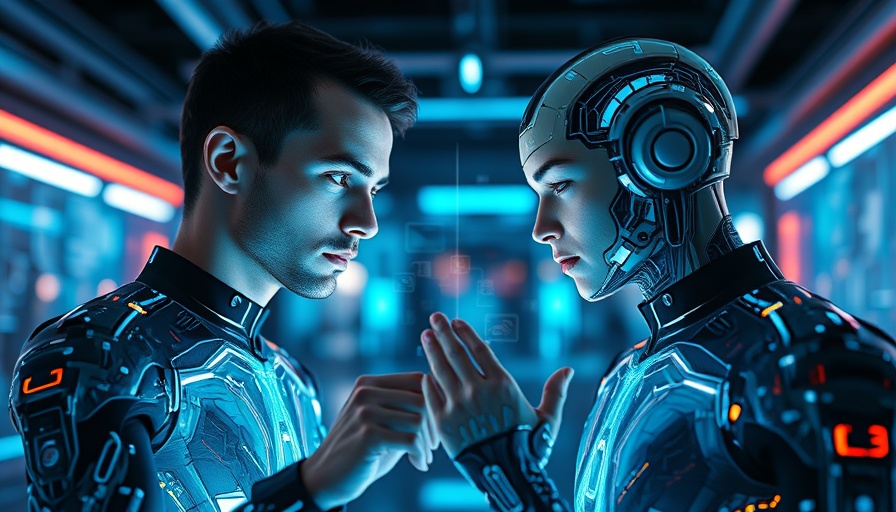
An Innovative Leap in Neuroscience: AI as Digital Twins
The brain, with its intricate neural networks and complexities, continues to captivate the scientific community. Recent research by Stanford Medicine highlights a groundbreaking approach where artificial intelligence (AI) models serve as 'digital twins'—lifelike simulations of brain functions. By employing these digital counterparts, researchers may soon enhance their understanding of cognitive processes and neuronal behaviors, thus revolutionizing neuroscience research.
How Digital Twins Work: Training with Real Data
The Stanford team led by Dr. Andreas Tolias has created a digital twin of the mouse brain's visual cortex trained on extensive datasets derived from actual brain activity. Using videos designed to reflect the visual experiences of mice, the model becomes proficient in predicting neural responses to new visual stimuli. The implications are profound: this accuracy enables researchers to conduct many preliminary experiments virtually, optimizing the selection of real-world trials based on digital insights.
The Broader Impact of AI Models in Biomedical Research
Beyond mere academic intrigue, the utilization of AI-driven models holds promise for numerous applications in health and wellness, particularly within the sphere of precision medicine. With increasing complexity in health challenges, the ability to simulate brain functions could lead to tailored therapies that maximize patient outcomes. The AI-generated predictions could facilitate advancements in understanding neurological conditions such as Alzheimer’s disease and autism spectrum disorder.
Future Predictions: A New Era of Understanding
As the field progresses, we can anticipate more sophisticated models encompassing broader segments of brain functionality, potentially extending to humans. The ultimate aspiration for neuroscientists is to transcend existing training paradigms, allowing these models to predict responses even outside previously sampled stimuli. This leap could unlock new strategies for addressing both mental and neurological health issues, enriching the pool of resources for health and wellness initiatives.
Counterarguments: Skepticism About AI’s Role in Neuroscience
Despite the excitement, some skeptics point to the limitations of digital twins in replicating the nuances of human cognition. Critics argue that the simulations may oversimplify complex human brain functions. Moreover, ethical concerns arise regarding data usage, privacy, and the potential for misinterpretation of AI-generated insights. It is crucial to cultivate a balanced discourse that acknowledges both the possibilities and the limitations of digital twin technology.
Community Health and Wellness: Broader Implications
For communities seeking to enhance health and wellness, the scholars' findings resonate strongly. Digital twins may eventually empower health practitioners with deeper insights into brain health, allowing for better community health programs that cater to specific needs. As healthcare technology evolves, integrating AI insights into community health and wellness initiatives could lead to improved collective outcomes and a more profound understanding of population health dynamics.
Engaging in Healthier Futures: How You Can Get Involved
As advancements in neuroscience unfold, individuals and communities can play a vital role by staying informed and advocating for robust discussions around the implications of AI in health research. Local health and wellness businesses can help bridge the gap between cutting-edge research and practical applications, ensuring that the benefits of these innovations reach wider audiences.
Embrace the dialogue surrounding health and wellness by attending community events that focus on the interplay between technology and medicine. As we unlock new frontiers, your proactive engagement can influence how these developments ultimately shape optimal health strategies.
 Add Row
Add Row  Add
Add 




 Add Row
Add Row  Add
Add 


Write A Comment